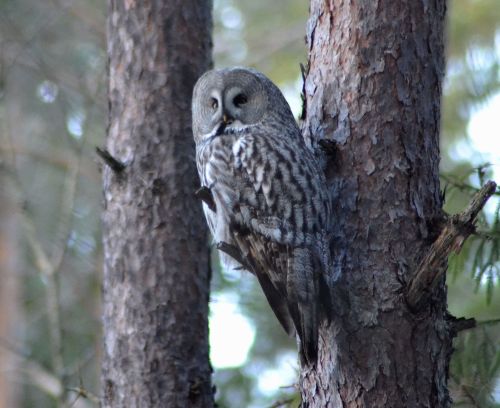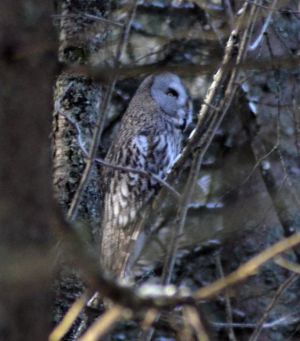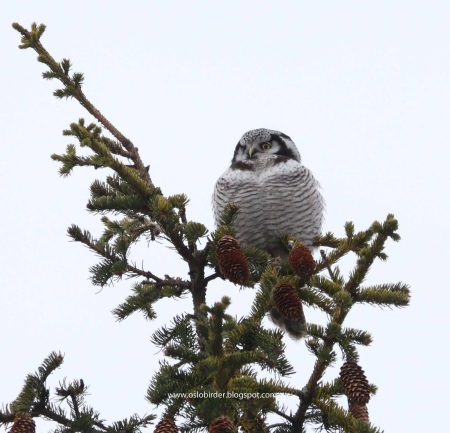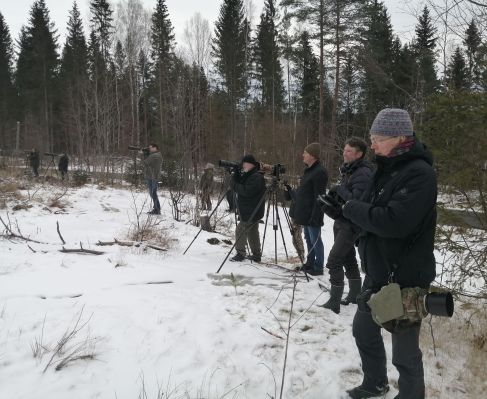As February lurches back towards the mundane I opted to try for a British and WestPal bird list addition that I had recorded previously only in Florida two years ago. A first-winter drake Blue-winged Teal, of genuine cited provenance has been over-wintering on these shores in the southern part of the “English Riviera” in south Devon through much of the current season.
Though at 180 miles this vagrant Nearctic duck was beyond my past preferred range, I had been considering taking another step on that slippery slope for a while now. Earlier in the winter it (the BWT) could perhaps have been described as rather nondescript, but more recently a few recognisable pictures had begun to appear online. And some other Oxon birders had hence made the same journey as spring approaches, ahead of myself.
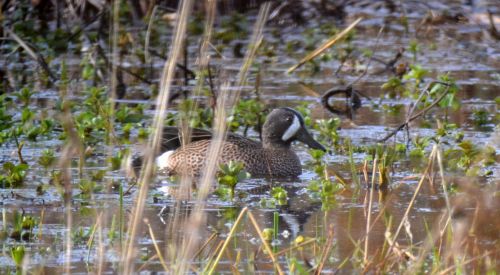
Today’s best effort … Blue-winged Teal (imm male)
I arrived on site at the tiny and highly picturesque NT Man Sands Wetland to the south of Brixham just before 9:00am, feeling a little flat perhaps a week on from GGOslo, though that is something about which I should not complain. From a car park at SX 91311 53068 an unmade road leads steeply down to the shoreline behind which lie some man made lagoons. In the cold, clear morning light it was at once plain I had gotten somewhere above averagely pleasant, and with bird sounds filling the air and their sources active in the hedgerows my dulled spirits began to revive.
The wildlife habitat here has been created by the National Trust (see here) since 2005, by removing old sea defences and field drainage to create a series of pools of standing water and marshland. A well established reed bed has now developed and the whole complex attracts common wildfowl and other water birds, wintering waders such as Snipe, and more. Today Cettis Warbler announced themselves here and there, while Stonechat were prominent in the surrounding fields. A Black Redstart has also over-wintered around a redundant lime kiln at the site though I wasn’t able to locate it.
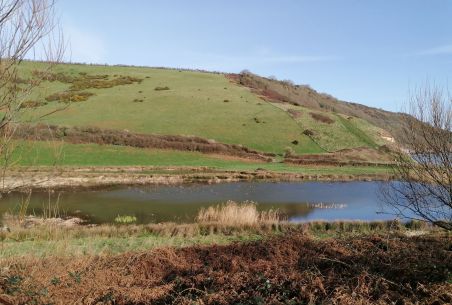
Man Sands Wetland looking towards the sea
On the landward side of the wetland is a small, elevated bird hide. My quest had been absent from RBA over the previous three days, though having been resident in the locality for quite some time it has become less newsworthy. Would it still be here? I scoped around the scene before me picking out small numbers of Gadwall, Mallard, Tufted Duck, Moorhen and Coot … and then the unmistakable form of the Blue-winged Teal. It was now 9:30 am and mission had already been accomplished.
The most noticeable features at that range of a BWT drake are possibly the broad white facial crescent and a bill that is much larger than those of Eurasian and other Teal species. This maturing individual was certainly an attractive sight as it dabbled continuously in the marshy vegetation of its adopted abode. The home range is north America where they occur almost throughout the continent, and British records average around four a year.
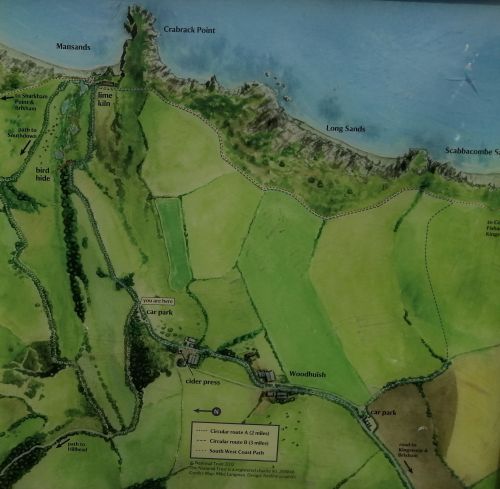
Man Sands Wetland and environs (site plan)
From the hide I noticed occasional walkers on the South West Coast Path between the lagoons and the beach here. Gaining any recognisable pictures from where I was seemed unlikely and so I walked down to the shoreline to try my luck closer in. Indeed better results were then attainable though nothing of any quality. At all times this otherwise delightful duck seemed intent on keeping to semi-cover and making acceptable pictures of itself as difficult as possible to acquire. These records (below) are all digiscoped.
I hadn’t especially wanted to come here today but the longer I lingered in this remote, even idyllic location the more I was drawn in by its natural beauty and tranquillity. And so as on many occasions in even more off the beaten track parts of the world I came to evaluate the seclusion of my situation. It was just me again in communion with this other lone wanderer, not unlike that with the Dwarf Bittern on Fuerteventura a year ago. This is what I know and it would be churlish not to appreciate that I can do these things.
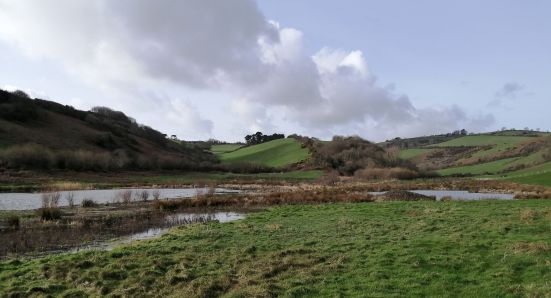
Man Sands Wetland looking inland
After two hours on site hunger pangs prompted my departure, then I drove into Brixham to seek a pasty shop. Earlier in the hide I had taken an opportunity to take pictures of several Bullfinch that were attracted to feeders placed just outside. The pictures (below) are impacted by having been captured through a none too clean, non-lift-able window.
Cirl Bunting has become something of a staple during my more recent travels in southern Europe, but in the British Isles is present only in south Devon that represents a kind of outpost in the species’ European range. My first career record was in November 1988 at Lannacombe Bay, south of where I was today, at which I believe Cirls are now rather more occasional. 16 miles north of Man Sands lies RSPB Labrador Bay (SX 930703), a small coastal reserve that is managed for the species and is now cited as the best site to observe them nationally.
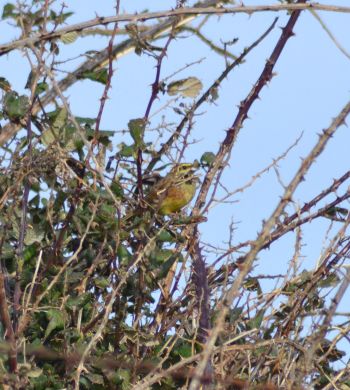
Cirl Bunting
It seemed a pity not to take such an opportunity when I was nearby, so that is where I headed in the afternoon. It didn’t take long to locate some Cirls (pictured above) and I found just three. An information board quoted 34 pairs on territory, but there was a lot of very steep habitat to search and by now I was feeling quite tired. So contenting myself with a reconnoitre of the site I spent just an hour there, filed it away for future reference then headed home.
The bottom line today was I gained a career 355th British and 499th WestPal bird. 180 miles indeed seems to be the new 150 where travelling is concerned, and time on the road passed easily enough. But it’s not all about numbers as a very wise Oxon birding colleague once chided me. The snap decision upon waking too early to plug a little gap in the field guide had produced an interesting and worthwhile outing.








